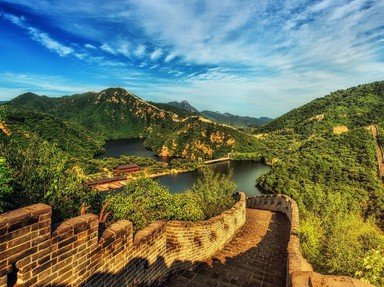Quiz Answer Key and Fun Facts
1. China, as with any large country, is the amalgam of diverse ethnic groups. In the early 13th Century, China was fragmented into several "empires". China changed irreversibly in 1207 AD when what group of people began a 60 year conquest that saw the unification of most of modern day China under their rule?
2. China and the USA have always had a complicated relationship due in part to the distance between the two countries. Even so, it is surprising to realize that it was not until the 20th century that a sitting US President made a formal state visit to China's mainland. Who was that US President?
3. One does not think of China as a haven for Western religious groups. Yet surprisingly since the 10th Century, the Chinese prefecture of Kaifeng in Henan Province has had a small but identifiable community of what oft-persecuted Western religious community?
4. Perhaps the best known foreign visitor to China was the Venetian explorer Marco Polo. However, much that you may have learned in school about Marco Polo is far from accurate. Which of these "facts" about Marco Polo and his adventures in China is NOT true?
5. The early 20th century brought tremendous change and intense suffering to many Chinese. Much of the misery was at the hands of Japan's military incursions into China during the 1930s. What then capital city of China was subjected to a six week period of civilian massacre and rape by Japanese military forces in 1937?
6. China and the British Empire fought two wars in the 19th century to stop the export of opium from Chinese ports bound for Britain.
7. One of the most famous books about the life of rural Chinese peasants in the early 20th century was written in English by the daughter of American Christian missionaries Absalom and Caroline Sydenstricker. By what name do we know the author of 1932 Pulitzer Prize winning novel "The Good Earth"?
8. The first of the great European maritime powers arrived in China in 1516 during the height of the Ming Dynasty. What European country enjoyed a favored trading status through possession of the Chinese island of Macau from 1557 until 1999?
9. The Ming Dynasty ruled China from the 14th century until the middle of the 16th century. In 1644, "Eastern Barbarians" took the city of Beijing and gained total control of China by 1680. What is the more common name for these invaders that ruled China from the 17th century to the early 20th century?
10. As unlikely as it may seem, the remote Chinese village of Zhelaizhai in Gansu province has a population that is primarily Caucasian in origin. This has given credence to the theory that the area was settled by soldiers from an ancient western civilization. What Western Empire do the villagers of Zhelaizhai claim settled in China during the 1st century BC?
Source: Author
adam36
This quiz was reviewed by FunTrivia editor
bloomsby before going online.
Any errors found in FunTrivia content are routinely corrected through our feedback system.
